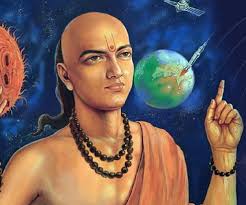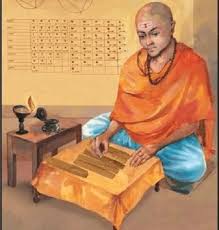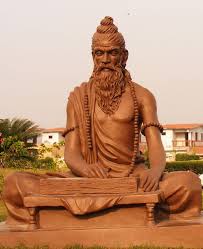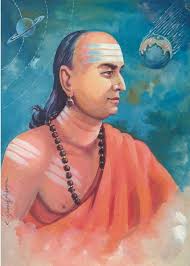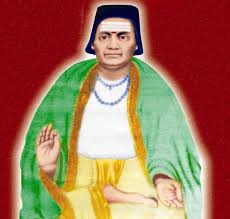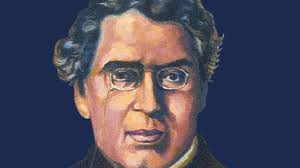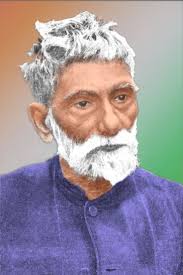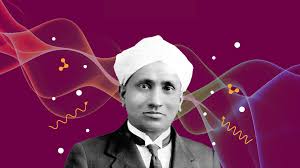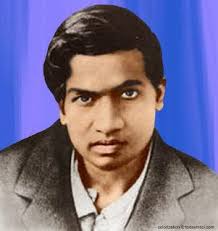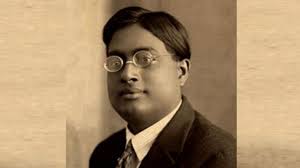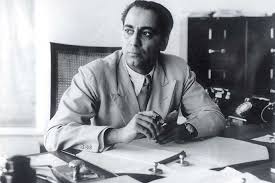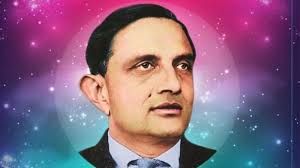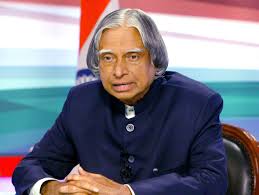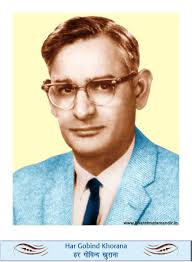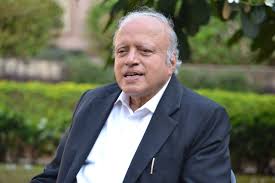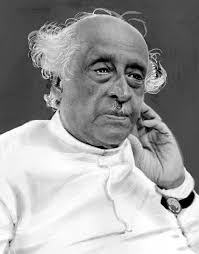Achievements of India in Science and Technology
Achievements of India in Science and Technology
Technological advancements have played a pivotal role in the progress of nations and the evolution of human civilization. India, recognized worldwide for its scientific rigor and potential, has made significant contributions to science and technology since ancient times, as demonstrated by its invention of zero and its research in particle physics. By consistently pursuing scientific and technological advancements throughout ancient and medieval periods, India has accelerated its pace of discoveries and innovations following independence. Indian scientists have been awarded the prestigious Nobel Prize in all three scientific disciplines. Currently, India is advancing in cutting-edge technologies, including tokamaks, neutrinos, gravitational waves, scramjets, human space missions, and other emerging technologies.
Science and Technology in Ancient India
The history of scientific innovation and advancement in India can be traced back to the Vedic era. Aryabhatta, a renowned mathematician, is credited with the invention of the concept of zero. Fundamental ideas related to squares, circles, triangles, fractions, algebraic expressions, and astronomy can all be found in Vedic texts. The intricate design of Harappan cities, featuring underground drainage systems, civil sanitation, hydraulic engineering, and air-cooling architecture, alongside the Iron Pillar located in Delhi, illustrates the advanced nature of indigenous technologies in India. The Rig Veda elaborates on concepts pertaining to astronomy and metaphysics. Ancient India was at the forefront of developing technology for creating rust-resistant iron, known as Wootz steel, which was exported to Europe and the Middle East for the manufacture of swords. Additionally, scholars such as Charaka and Sushruta made significant contributions to Ayurveda, as documented in ancient manuscripts.
Science and Technology in Medieval India
The medieval era, albeit at a gradual pace, saw advancements in science and technology within India.
Indian Mathematicians:
Narayana Pandit is recognized for his significant contributions to mathematics, particularly through his works, Ganitakaumudi and Bijaganitavatamsa. Gangadhara authored three notable treatises that established rules for trigonometric concepts: Lilavati Karamdipika, Suddhantadipika, and Lilavati Vyakhya. During the Mughal era, Faizi translated Bhaskara’s Bijaganit.
Biology:
In the thirteenth century, Hamsadeva compiled Mrga-paksi-sastra, a text that offers a general, albeit not always scientifically rigorous, overview of various hunting animals and birds. Jahangir documented his observations and experiments related to breeding and hybridization in his work, Tuzuk-i-Jahangiri.
Chemistry:
This period produced two significant treatises: Siddhayoga by Vrinda (circa 975 CE) and Chakradatta by Chakrapani Dutta (circa 1050 CE). Extensive research on mercury and sulfur was conducted between 700 CE and 1300 CE. Nagarjuna, the author of Rasaratnaakara, is a prominent figure among Indian alchemists of medieval India. Vaagbhata’s works, Rasaarnava and Rasaratnasamcchaya, are among the important texts that followed Rasaratnaakara. The Ain-i-Akbari discusses the management of Akbar’s Perfume Office.
Astronomy:
Mehendra Suri, the court astronomer for Firoz Shah Tughlak, developed an astronomical instrument known as “Yantraja.” Maharaja Sawai Jai Singh-II established five astronomical observatories located in Delhi, Ujjain, Varanasi, Mathura, and Jaipur.
Medicine:
The Unani Tibb medical system thrived in India during the medieval period. Ali-bin Rabban authored Firdausu-Hikmat, which synthesized Greek medical principles with Indian medical knowledge. The Tibbi Aurangzebi is derived from Ayurvedic sources.
INDIAN SCIENTISTS
1. Aryabhata (476 CE) – The Pioneer of Indian Mathematics and Astronomy
2. Brahmagupta (598 CE – 668 CE) – The Genius Mathematician and Astronomer
3. Sushruta (6th Century BCE) – The Father of Surgery and Pioneer of Ancient Indian Medicine
4. Varahamihira (505 CE – 587 CE) – The Legendary Astronomer, Astrologer, and Mathematician
5. Bhaskara I & II (1114 CE – 1185 CE)
6. Jagdish Chandra Bose (1858 – 1937)
7. Prafulla Chandra Ray (1861 – 1944)
8. C.V. Raman (1888 – 1970)
9. Meghnad Saha (1893 – 1956)
10. Srinivasa Ramanujan (1887 – 1920)
11. Satyendra Nath Bose (1894 – 1974)
12. Homi J. Bhabha (1909 – 1966)
13. Vikram Sarabhai (1919 – 1971)
14. A.P.J. Abdul Kalam (1931 – 2015)
15. Har Gobind Khorana (1922 – 2011)
16. M. S. Swaminathan (1925 – 2023)
17. G. N. Ramachandran (1922 – 2001)
1. Aryabhata (476 CE) – The Pioneer of Indian Mathematics and Astronomy
Aryabhata was a renowned Indian mathematician and astronomer, best known for his groundbreaking work in the fields of algebra, trigonometry, and celestial mechanics. His treatise, Aryabhatiya, written in Sanskrit, became a cornerstone in the development of mathematical and astronomical concepts that influenced scholars for centuries.
Major Contributions:
Introduction of the Concept of Zero and the Place Value System
- Aryabhata played a crucial role in laying the foundation for the modern number system by introducing the place value notation. His work later influenced Indian and Arabic mathematicians, contributing to the widespread adoption of the decimal system.
Approximation of Pi (π) with High Accuracy
- He calculated the value of π (pi) as approximately 3.1416, recognizing it as an irrational number—a significant achievement for his time. His findings helped in improving geometric and trigonometric calculations.
Earth’s Rotation and Heliocentric Ideas
- Aryabhata proposed that the Earth rotates on its axis, causing the apparent motion of the stars. This was a revolutionary idea, challenging the prevalent belief that the Earth was stationary. His theories predated Copernicus’ heliocentric model by over a thousand years.
Trigonometric Advancements and Sine Tables
- He developed sine tables, introducing terms like “jya” (sine) and “kojya” (cosine), which later influenced Arabic and European trigonometry. His work paved the way for modern trigonometric functions used in astronomy and engineering.
Astronomical Calculations and Eclipse Predictions
- Aryabhata devised methods to predict solar and lunar eclipses, explaining them through shadow interactions between the Sun, Earth, and Moon. His calculations on planetary orbits and motion were highly accurate for his time.
Contributions to Algebra and Quadratic Equations
- He formulated equations for solving linear and quadratic indeterminate equations, influencing later developments in algebraic theory. His techniques were later expanded upon by Brahmagupta and Bhaskara I.
Aryabhata’s intellectual legacy continues to inspire scientists and mathematicians worldwide. His contributions shaped the course of mathematical and astronomical advancements, earning him recognition as one of the greatest scholars in ancient history.
2. Brahmagupta (598 CE – 668 CE) – The Genius Mathematician and Astronomer
Brahmagupta was an Indian mathematician and astronomer whose pioneering contributions laid the groundwork for modern algebra, arithmetic, and celestial mechanics. Born in 598 CE in present-day Rajasthan, India, he authored the renowned treatise Brahmasphutasiddhanta (The Corrected Treatise of Brahma), which became a key text in Indian and Islamic mathematics and astronomy.
Major Contributions:
Definition and Rules for Zero and Negative Numbers
Brahmagupta was among the first to establish rules for arithmetic operations involving zero and negative numbers. He introduced concepts such as:
- A number subtracted from itself equals zero.
- A positive number multiplied by zero results in zero.
- The sum of two negative numbers is negative.
His work on zero formed the foundation for modern mathematical computations and influenced scholars in the Arab world and beyond.
Author of Brahmasphutasiddhanta (628 CE)
- This astronomical and mathematical text was one of the earliest known works to systematically define algebraic operations. It contained rules for arithmetic, algebra, geometry, and trigonometry, along with detailed astronomical observations. The book was later translated into Arabic, significantly impacting Islamic and European mathematics.
Formulas for Solving Quadratic Equations
Brahmagupta provided explicit methods for solving quadratic equations, including:
- The Brahmagupta formula for finding the area of cyclic quadrilaterals.
- Solutions for indeterminate quadratic equations, influencing the later work of Fibonacci and other European mathematicians.
Concept of Gravity (Preceding Newton by a Millennium)
- He hypothesized that all objects are naturally attracted to the Earth, an early understanding of gravitational force. While his explanation was not as refined as Newton’s law of universal gravitation, it was a significant leap in ancient physics.
Astronomical Advancements – Understanding of Eclipses and Planetary Motion
- Brahmagupta improved the understanding of lunar and solar eclipses, explaining them using the interplay of shadows between celestial bodies. His astronomical models provided accurate planetary motion predictions, improving on earlier Indian astronomical works.
Methods for Calculating Square Roots and Cube Roots
- He devised techniques for finding square and cube roots, along with methods for solving linear and quadratic equations, which influenced medieval Indian and Arab mathematicians.
Brahmagupta’s groundbreaking contributions cemented his status as a legendary figure in mathematics and astronomy. His work was centuries ahead of its time, and his legacy continues to inspire scholars across the world.
3. Sushruta (6th Century BCE) – The Father of Surgery and Pioneer of Ancient Indian Medicine
Sushruta, often regarded as the “Father of Surgery,” was an ancient Indian physician and surgeon whose contributions revolutionized medical science. He is credited with authoring the Sushruta Samhita, a comprehensive Sanskrit text that serves as one of the oldest and most detailed treatises on surgery, medicine, and human anatomy. His groundbreaking techniques and methods laid the foundation for modern surgery and continue to inspire medical advancements today.
Major Contributions:
Author of the Sushruta Samhita – A Pioneering Medical Text
The Sushruta Samhita is one of the most detailed medical and surgical compendiums from ancient India. It covers a vast range of medical topics, including surgical procedures, pharmacology, anatomy, and disease management. This text was later translated into Arabic and Persian, influencing Islamic medicine and European surgical practices.
Development of Advanced Surgical Techniques, including Plastic Surgery
Sushruta is credited with developing innovative surgical techniques, including:
- Rhinoplasty (Nose Reconstruction) – He devised early plastic surgery techniques for reconstructing the nose, a method still in use today.
- Otoplasty (Ear Reconstruction) – He performed surgeries to restore damaged ears.
- Skin Grafting – He pioneered techniques for grafting skin to repair wounds and injuries.
Description of Over 300 Surgical Procedures and 120 Surgical Instruments
The Sushruta Samhita details more than 300 types of surgical procedures and lists 120+ specialized surgical instruments, including scalpels, forceps, and needles made from wood, metal, and animal bones. His precision in detailing these techniques demonstrates the high level of medical knowledge in ancient India.
Pioneer in Cataract Surgery and Cosmetic Surgery
Sushruta was one of the first physicians to perform cataract surgery, using a curved needle to remove the lens and restore vision. His expertise in cosmetic and reconstructive surgeries highlights the advanced medical practices of ancient India.
Emphasis on Hygiene and Antiseptic Techniques in Medicine
- Long before the discovery of modern germ theory, Sushruta stressed the importance of hygiene and sterilization in medical practices. He recommended:
- Boiling surgical instruments before use to prevent infections.
- Using medicinal herbs and antiseptic solutions to clean wounds and accelerate healing.
- Personal hygiene for surgeons, including handwashing and clean attire before performing operations.
Pioneering Dissection Techniques for Studying Human Anatomy
Sushruta was one of the earliest medical practitioners to advocate dissection of human cadavers for studying anatomy. He instructed students to:
- Soak dead bodies in water for gradual decomposition, making it easier to study internal structures.
- Analyze different body parts in detail, including muscles, bones, organs, and tissues.
Sushruta’s immense contributions not only influenced ancient Indian medicine but also shaped global surgical practices. His emphasis on scientific methods, hygiene, and detailed anatomical studies makes him a legendary figure in the history of medicine.
4. Varahamihira (505 CE – 587 CE) – The Legendary Astronomer, Astrologer, and Mathematician
Varahamihira was an eminent Indian astronomer, astrologer, and mathematician whose contributions significantly advanced the fields of astronomy, trigonometry, and hydrology. His extensive research and discoveries are compiled in Brihat Samhita, an encyclopedic text that remains one of the most comprehensive works in Indian astrology and astronomy. His pioneering ideas, including the reflection of sunlight by the Moon and underground water detection, were centuries ahead of their time.
Major Contributions:
Author of Brihat Samhita – An Encyclopedic Treatise on Astronomy and Astrology :
- One of Varahamihira’s most famous works, the Brihat Samhita, is an extensive Sanskrit text covering a wide range of topics, including astronomy, astrology, weather science, architecture, gemology, hydrology, and agriculture. This book served as a reference guide for scholars, architects, and kings, influencing scientific thought in India and beyond.
Contributions to Trigonometry and Mathematics :
Varahamihira expanded on the mathematical concepts established by earlier Indian mathematicians, refining trigonometric functions and sine tables. His contributions include:
- Refinement of sine and cosine functions, which later influenced global trigonometry.
- Introduction of interpolation techniques for more accurate calculations.
- Development of methods for determining planetary positions and celestial movements.
Proposed the Concept of Underground Water Detection
One of his groundbreaking theories was in hydrology, where he proposed that the presence of underground water could be detected by observing certain natural indicators, such as:
- Plant growth patterns and soil conditions
- Movements of certain bird species and animal behavior
- Rock formations and geological features
His insights laid the foundation for traditional water conservation and well-digging techniques in India.
Developed a Calendar System Based on Planetary Positions
- Varahamihira played a crucial role in refining India’s calendar system, ensuring accurate calculations of eclipses, solstices, and equinoxes. His work contributed to the development of the Hindu Panchang (almanac), which is still used today for religious, agricultural, and astronomical purposes.
Explained that the Moon Reflects Sunlight Instead of Emitting Its Own Light
Centuries before modern science confirmed it, Varahamihira stated that the Moon does not have its own light but instead reflects sunlight. This was a revolutionary concept in astronomy at the time and demonstrated his deep understanding of celestial bodies and their interactions.
Advancements in Astrology and Planetary Motion Theories
- Varahamihira refined astrological principles and theories on planetary motion, combining elements of Greek, Persian, and Indian astronomical knowledge. His works significantly contributed to the development of Vedic astrology (Jyotish Shastra) and provided predictive models for eclipses, planetary conjunctions, and weather patterns.
Varahamihira’s groundbreaking contributions to astronomy, astrology, hydrology, and mathematics continue to influence scientific and astrological studies today. His profound understanding of natural sciences, celestial mechanics, and predictive techniques solidifies his place as one of the greatest scholars of ancient India.
5. Bhaskara I & II (1114 CE – 1185 CE)
Bhaskara I (c. 1114 CE – 1185 CE) Bhaskara I, a prominent Indian mathematician and astronomer, is best known for his early commentaries on the work of Aryabhata, a pioneer in Indian mathematics. Bhaskara I played a crucial role in preserving and expanding upon Aryabhata’s theories. His work helped lay the foundation for future developments in both mathematics and astronomy, influencing scholars for centuries. His most notable contribution is his commentary on Aryabhata’s Aryabhatiya, where he clarified many of Aryabhata’s concepts, including his work on the approximation of pi and the calculation of time.
Bhaskara II (c. 1114 CE – 1185 CE) Bhaskara II, also known as Bhaskaracharya, is considered one of the greatest mathematicians and astronomers in Indian history. His most renowned works are Lilavati (on arithmetic) and Bijaganita (on algebra), which have had a profound impact on mathematics, both in India and globally. In Lilavati, Bhaskara II addressed the complexities of arithmetic, offering solutions to various problems and puzzles related to numbers, geometry, and measurement. Bijaganita delved deep into algebraic equations, exploring solutions for both linear and quadratic equations and introducing new methods for solving indeterminate equations.
Bhaskara II’s contributions go far beyond arithmetic and algebra; he also made pioneering advances in the field of calculus. He introduced the concepts of differential calculus, predating the discoveries made by European mathematicians such as Isaac Newton and Gottfried Wilhelm Leibniz by several centuries. In his work, Bhaskara explored the principles of derivatives and the rates of change, laying the groundwork for the future development of calculus.
In addition to his work in mathematics, Bhaskara II made significant contributions to astronomy, particularly in the field of planetary motion. His calculations of planetary positions and eclipses were incredibly accurate for his time, and he proposed methods for calculating the positions of celestial bodies in relation to Earth. His ideas on the motions of planets and their orbits were innovative, demonstrating a deep understanding of the cosmos.
Bhaskara II also introduced several algebraic techniques, including cyclic methods for solving equations, which were later refined by other mathematicians. His ability to solve complex algebraic equations and his contributions to the understanding of number theory and geometry helped shape mathematical thought in medieval India and beyond.
In conclusion, both Bhaskara I and II played pivotal roles in advancing mathematics and astronomy. Bhaskara I’s commentaries on Aryabhata’s work preserved and enhanced early mathematical ideas, while Bhaskara II’s groundbreaking contributions to algebra, calculus, and astronomy set the stage for future advancements in science and mathematics. Their legacy continues to inspire mathematicians, astronomers, and scholars worldwide.
6. Jagdish Chandra Bose (1858 – 1937)
Jagdish Chandra Bose was a pioneering Indian scientist whose groundbreaking research spanned multiple disciplines, including physics, biology, and botany. He is widely recognized for his contributions to radio wave technology, microwave optics, plant physiology, and semiconductor physics. His remarkable work placed India on the global scientific map and laid the foundation for many modern advancements.
Pioneer in Radio Waves and Wireless Communication
Jagdish Chandra Bose is credited with being one of the first scientists to work extensively on radio waves and microwave optics. He conducted experiments that proved the existence of electromagnetic waves and demonstrated their ability to travel through walls, showcasing wireless signal transmission as early as 1895. This was two years before Guglielmo Marconi’s famous demonstration of wireless telegraphy. Bose’s work in this field was revolutionary, and he is now recognized as one of the true pioneers of wireless communication.
First to Demonstrate Wireless Communication Before Marconi
Bose successfully demonstrated the transmission of electromagnetic waves over a distance using a coherer, an early form of radio wave detector. During a public demonstration in 1895, he transmitted signals through walls and even rang a bell remotely using electromagnetic waves. Despite his significant contributions, Bose did not commercialize his invention, as he believed scientific discoveries should benefit humanity rather than be exploited for personal gain.
Discovery of Plant Response to Stimuli
Apart from his work in physics, Bose made groundbreaking contributions to plant biology. Through a series of experiments, he demonstrated that plants, like animals, respond to external stimuli such as light, heat, and touch. His research showed that plants undergo physiological changes in response to different stimuli, challenging existing beliefs at the time.
Invention of the Crescograph
To further study plant responses, Bose invented the crescograph, an instrument designed to measure the growth of plants with extreme precision. This device magnified small movements in plants, allowing scientists to observe and record their growth patterns in response to environmental factors. His findings laid the foundation for modern plant physiology and provided insights into plant behavior that were previously unknown.
Contributions to Semiconductor Physics
In addition to his work in radio waves and plant biology, Bose conducted early research in semiconductor physics. He was among the first to experiment with the use of semiconductors for detecting radio waves, making him one of the earliest pioneers in this field. His work with crystal detectors played a role in the later development of semiconductor devices, which form the basis of modern electronic technology.
Advocate for Science and Public Welfare
Jagdish Chandra Bose was not only a scientist but also a strong advocate for the advancement of scientific research in India. He refused to patent many of his inventions, believing that knowledge should be freely available for the benefit of humanity rather than restricted for commercial gain. His vision and commitment to public welfare helped shape the course of scientific progress in India and inspired future generations of researchers.
Legacy and Impact
Jagdish Chandra Bose’s contributions to science continue to influence multiple fields today. His pioneering work in radio communication laid the groundwork for modern wireless technology, his research in plant physiology revolutionized our understanding of plant behavior, and his early experiments in semiconductor physics contributed to the evolution of electronics. His commitment to scientific knowledge as a tool for societal progress serves as an enduring inspiration to scientists worldwide.
7.Prafulla Chandra Ray (1861 – 1944)
Prafulla Chandra Ray was a pioneering Indian chemist, industrialist, and educator who played a crucial role in the advancement of chemical sciences in India. He is widely regarded as the “Father of Indian Chemistry” for his significant contributions to the field and his efforts to promote scientific research and industrialization in the country. A visionary scientist and nationalist, he believed in using science for the economic and social upliftment of India.
Founder of Bengal Chemicals & Pharmaceuticals
One of Ray’s most notable achievements was the establishment of Bengal Chemicals & Pharmaceuticals Ltd. in 1901, making it India’s first pharmaceutical company. At a time when India was heavily dependent on foreign imports for medicines and chemical products, Ray’s company marked the beginning of India’s self-reliance in pharmaceuticals. Under his leadership, Bengal Chemicals produced a wide range of medicinal and industrial chemicals, many of which were used to combat diseases and improve public health. His pioneering efforts laid the foundation for India’s modern chemical and pharmaceutical industry.
Discovery of Mercurous Nitrite and Contributions to Chemistry
Ray’s research in chemistry led to the discovery of mercurous nitrite (Hg₂(NO₂)₂) in 1896, a compound that paved the way for further studies in inorganic chemistry. His work on nitrites and their derivatives was widely recognized and contributed significantly to the understanding of metal nitrates and their properties. His research was published in numerous international scientific journals, earning him recognition from the global scientific community. Ray’s work in chemistry went beyond mere discovery—he encouraged innovation and industrial application, emphasizing the need for India to develop its own scientific capabilities.
Promotion of Indigenous Industries and the Swadeshi Movement
Ray was a strong advocate of Swadeshi (self-reliance) and actively promoted indigenous industries as a means of economic independence. During British colonial rule, he urged Indians to boycott foreign goods and encouraged the establishment of local industries to reduce dependence on imported products. His contributions to the Swadeshi movement extended beyond mere rhetoric—he actively supported Indian entrepreneurs and scientists, helping them set up industries that could compete with Western firms.
Encouraging Scientific Research and Education in India
As an educator, Ray had a profound impact on scientific research and higher education in India. He was a dedicated professor at Presidency College, Calcutta (now Kolkata), where he mentored and inspired generations of students who later became prominent scientists. He believed that India’s progress depended on the advancement of scientific research and the development of a strong scientific community. His commitment to education extended to writing textbooks and research papers to make science more accessible to Indian students.
Author of A History of Hindu Chemistry
Ray was also a historian of science and authored the famous book “A History of Hindu Chemistry”, in which he documented the rich legacy of chemical knowledge in ancient India. In this seminal work, he explored how early Indian scholars made significant contributions to fields such as metallurgy, medicine, and alchemy long before modern Western chemistry emerged. His research shed light on India’s scientific heritage and countered the colonial narrative that dismissed Indian advancements in science and technology.
Advocacy for Science-Based Industrialization in India
Ray strongly believed that science should be used as a tool for industrial and economic progress. He consistently advocated for science-based industrialization in India, arguing that a scientifically driven economy would be key to the country’s self-sufficiency and growth. His vision aligned with the broader goal of nation-building, and he encouraged the collaboration of science with industry to create employment opportunities and enhance India’s global standing in chemistry and pharmaceuticals.
Legacy and Impact
Prafulla Chandra Ray’s contributions to science, industry, and education left an indelible mark on India’s scientific landscape. His role in establishing India’s chemical industry, his groundbreaking research in chemistry, and his advocacy for indigenous industries continue to inspire scientists, entrepreneurs, and policymakers. His life was a testament to the idea that scientific knowledge, when combined with nationalistic fervor, can drive economic and social transformation.
Today, Ray’s legacy lives on in India’s thriving chemical and pharmaceutical industries, which owe their roots to his pioneering efforts. His commitment to scientific progress, self-reliance, and education makes him one of the most influential figures in the history of Indian science.
8. C.V. Raman (1888 – 1970)
Sir Chandrasekhara Venkata Raman, commonly known as C.V. Raman, was one of India’s most distinguished physicists, best known for his groundbreaking discovery of the Raman Effect in light scattering. His pioneering research in optics and acoustics earned him the Nobel Prize in Physics in 1930, making him the first Asian and the first non-white recipient of the prestigious award in the field of science. Raman’s contributions not only revolutionized the understanding of light behavior but also laid the foundation for a powerful analytical technique known as Raman Spectroscopy, which has numerous applications in science and industry today.
Discovery of the Raman Effect
In 1928, C.V. Raman and his colleague K.S. Krishnan made a historic discovery that came to be known as the Raman Effect. Through meticulous experiments, Raman demonstrated that when light passes through a transparent medium, a small fraction of the scattered light changes its wavelength. This phenomenon, which was in direct contradiction to classical physics at the time, provided crucial evidence for the quantum nature of light and confirmed the existence of inelastic scattering of photons. The Raman Effect was a landmark discovery in the field of physics and played a fundamental role in the development of quantum mechanics and molecular spectroscopy.
Winning the Nobel Prize in Physics (1930)
Raman’s discovery was widely recognized as a major breakthrough in physics, earning him the Nobel Prize in 1930. This achievement was not only a personal triumph but also a moment of immense pride for India, as it demonstrated the country’s potential in cutting-edge scientific research during the colonial era. The discovery of the Raman Effect remains one of the most celebrated achievements in Indian science.
Proving That Light Changes Wavelength Upon Scattering
Through his research, Raman was able to prove conclusively that light does not always maintain the same wavelength after being scattered. This insight was crucial in the advancement of modern physics, as it provided a deeper understanding of photon interactions with matter. The Raman Effect became a vital tool for analyzing molecular and atomic structures, helping scientists identify different materials based on how they scatter light. Today, Raman Spectroscopy is widely used in chemistry, material science, medical diagnostics, and even forensic science.
Establishment of the Indian Academy of Sciences
Beyond his scientific discoveries, C.V. Raman was deeply committed to promoting scientific research in India. He played a key role in establishing the Indian Academy of Sciences (IAS) in 1934, which continues to be one of the country’s leading scientific institutions. He was also instrumental in fostering a culture of scientific inquiry and innovation in India, encouraging young scientists to pursue research and contribute to global scientific advancements.
Contributions to Acoustics and Optics Research
While Raman is best known for his work in light scattering, his research interests extended to acoustics, musical instruments, and crystal dynamics. He conducted extensive studies on the mechanics of sound propagation and the vibrational properties of musical instruments, such as the violin and Indian percussion instruments. His work in optics and wave propagation also helped in the development of optical instruments and technologies.
Legacy: The Foundation of Raman Spectroscopy
Raman’s discovery laid the foundation for Raman Spectroscopy, an advanced scientific technique used to analyze the composition of substances at a molecular level. This technique has had a profound impact across multiple scientific fields, including chemistry, physics, biology, medicine, nanotechnology, and material science. Raman Spectroscopy is now widely used in industries ranging from pharmaceuticals and forensics to environmental science and space exploration.
A Lasting Impact on Science and India
C.V. Raman’s contributions to science and education in India were immense. He served as the Director of the Indian Institute of Science (IISc), Bangalore, where he mentored many future scientists and encouraged world-class research. His passion for scientific discovery and his vision for India’s self-reliance in science and technology continue to inspire generations of researchers.
To honor his contributions, India celebrates National Science Day on February 28th, the day he discovered the Raman Effect. His legacy endures through the institutions he established, the scientific knowledge he advanced, and the many researchers he inspired.
C.V. Raman was not just a scientist—he was a visionary who transformed the landscape of Indian science. His discovery of the Raman Effect changed the way we understand light and matter, and his contributions to physics, education, and scientific research remain unparalleled. His life’s work continues to shape modern scientific progress, making him one of the most influential physicists of the 20th century.
9. Meghnad Saha (1893 – 1956)
Meghnad Saha was a pioneering Indian astrophysicist and scientist whose contributions to theoretical physics revolutionized our understanding of stellar atmospheres. He is best known for developing the Saha Ionization Equation, a fundamental concept in astrophysics that explains how the spectral lines of stars correspond to their temperature and chemical composition. Beyond his groundbreaking work in astrophysics, Saha played a crucial role in India’s atomic energy program, scientific policymaking, and technological development after independence.
Development of the Saha Ionization Equation
Meghnad Saha’s most significant contribution to science was the Saha Ionization Equation, formulated in the early 1920s. This equation describes how temperature and pressure affect the ionization of elements in stellar atmospheres, allowing scientists to determine the physical and chemical properties of stars based on their spectra. His work was instrumental in astrophysics, stellar classification, and nuclear physics, and it remains widely used in modern astronomical studies.
The Saha Ionization Equation helped astronomers understand why stars emit different wavelengths of light and how these emissions correlate with their temperature, density, and composition. His theory laid the groundwork for later advancements in atomic and quantum physics, significantly shaping modern astrophysical research.
Explaining the Relationship Between Spectral Lines and Temperature
Before Saha’s discovery, the patterns observed in stellar spectra were not well understood. His equation provided a mathematical framework to explain why the spectral lines of elements in a star’s atmosphere vary based on temperature and pressure. This breakthrough helped classify stars based on their temperature and composition, leading to significant progress in the field of astrophysics. His work also influenced later research in nuclear reactions, ionization processes, and plasma physics.
Key Role in India’s Atomic Energy Program
Meghnad Saha was deeply invested in advancing scientific and technological progress in India. He was one of the architects of India’s atomic energy program and played an influential role in developing nuclear science in the country. His advocacy for nuclear research led to the establishment of institutions and policies that laid the foundation for India’s advancements in atomic energy.
Recognizing the importance of nuclear power in nation-building, Saha pushed for the peaceful use of nuclear energy for scientific and industrial applications. His vision helped shape India’s atomic research, ultimately contributing to the country’s rise as a nuclear-capable nation.
Contributions to Science Research Institutions in India
Apart from his individual contributions to physics, Saha was instrumental in building scientific infrastructure in India. He played a key role in the establishment of scientific research institutions, observatories, and technological institutes to promote the growth of science in the country. Some of his notable contributions include:
- Founding the Institute of Nuclear Physics (now the Saha Institute of Nuclear Physics in Kolkata).
- Contributing to the growth of the Indian Association for the Cultivation of Science (IACS), where he conducted much of his research.
- Advocating for the modernization of Indian universities and promoting scientific education.
His efforts helped shape India’s scientific landscape, fostering a culture of innovation, research, and technological self-reliance.
Advocacy for Technological Development in Independent India
Saha strongly believed that scientific and technological advancement was essential for India’s progress. He emphasized the need for:
- Self-reliance in industrial and technological sectors to reduce dependence on foreign imports.
- Investment in scientific education to produce skilled researchers and engineers.
- Government support for scientific research to drive economic and industrial growth.
He was a vocal proponent of using science and technology to solve real-world problems, from energy production to agricultural development. His vision helped shape India’s early policies on industrialization and scientific research, leaving a lasting impact on the country’s technological progress.
Scientific Policy-Making as a Member of Parliament
Beyond his scientific contributions, Saha was also actively involved in policymaking. He was elected as a Member of Parliament (Lok Sabha) in 1952, where he worked to ensure that science played a central role in India’s national development.
As an MP, Saha:
- Advocated for increased funding for scientific research and education.
- Worked towards modernizing India’s industrial and technological sectors.
- Pushed for the establishment of research institutions and technological universities.
His scientific approach to policy-making helped bridge the gap between science, industry, and governance, influencing India’s long-term strategy for scientific development.
Legacy and Impact
Meghnad Saha’s contributions to astrophysics, nuclear science, and scientific policymaking continue to shape modern science. His Saha Ionization Equation remains a fundamental tool in astrophysics, and his advocacy for scientific research and industrial development played a crucial role in shaping India’s scientific future.
His legacy lives on through:
- The Saha Institute of Nuclear Physics, which continues to drive advanced research in nuclear and theoretical physics.
- His contributions to stellar astrophysics and plasma physics, which remain fundamental in scientific studies.
- His pioneering role in bridging science with governance, demonstrating how scientific thought can influence policymaking.
Meghnad Saha was more than just a brilliant scientist—he was a visionary leader who believed in the power of science to transform nations. His work in astrophysics, atomic energy, education, and policymaking established a foundation for India’s scientific and technological growth. His contributions continue to inspire scientists, policymakers, and researchers worldwide, cementing his place as one of India’s greatest scientific minds.
10.Srinivasa Ramanujan (1887 – 1920)
Srinivasa Ramanujan was a self-taught mathematical genius from India whose extraordinary contributions to number theory, infinite series, continued fractions, and mathematical analysis revolutionized modern mathematics. Despite having no formal training in advanced mathematics, he made groundbreaking discoveries that continue to influence various scientific fields, including physics, cryptography, and computer science.
His story is one of remarkable intellect, perseverance, and passion for mathematics. Even with limited resources, he independently developed some of the most complex mathematical formulas, many of which were ahead of his time. His short but impactful life left an indelible mark on the world of mathematics, making him one of the greatest mathematical minds in history.
A Self-Taught Mathematical Prodigy
Born in Erode, Tamil Nadu, India, in 1887, Ramanujan displayed an early aptitude for mathematics. By the age of 12, he had mastered advanced mathematical concepts without formal guidance. He independently studied trigonometry, algebra, and infinite series, deriving complex theorems that even seasoned mathematicians struggled to comprehend.
Despite his talent, Ramanujan faced academic and financial struggles, as he found little interest in subjects outside of mathematics. His lack of a formal degree led to difficulties in securing a stable job, but he continued to work on mathematics passionately. His life changed when he sought recognition from leading mathematicians in England.
Collaboration with G.H. Hardy at Cambridge
In 1913, Ramanujan wrote a letter to the famous British mathematician G.H. Hardy, enclosing several pages of mathematical theorems that he had independently discovered. Hardy was astounded by the originality and brilliance of Ramanujan’s work, famously stating that the theorems “must be true because if they were not true, no one would have had the imagination to invent them.”
Recognizing his immense talent, Hardy invited Ramanujan to Trinity College, Cambridge University, where their legendary collaboration began. Together, they worked on number theory, modular functions, and infinite series, producing groundbreaking results. Hardy helped refine Ramanujan’s proofs, while Ramanujan introduced novel ideas that deeply influenced modern mathematics.
Contributions to Number Theory, Infinite Series, and Partitions
Ramanujan made significant contributions to various fields of mathematics, particularly:
1. Number Theory:
- Developed highly advanced theories on prime numbers, modular forms, and partitions.
- His work on highly composite numbers laid the foundation for later research in computational mathematics.
- Formulated deep insights into Riemann’s zeta function, influencing prime number distribution.
2. Infinite Series & Continued Fractions:
- Introduced some of the most elegant and rapidly converging infinite series, including an efficient series for computing π (pi).
- His work on continued fractions introduced new identities that continue to be studied today.
3. Partition Theory:
- Developed formulas for computing the partition function, which describes how a number can be expressed as a sum of smaller numbers.
- His findings in partitions have applications in statistical physics, cryptography, and combinatorics.
Ramanujan’s Prime Number Formula
One of Ramanujan’s most celebrated discoveries is his formula for prime numbers, which provides an approximation for the distribution of prime numbers. This formula was ahead of its time and has since been applied in fields like quantum physics, complex systems, and cryptographic algorithms.
His deep insights into the properties of prime numbers have contributed to the advancement of encryption methods used in modern computer security and communications.
Impact on Modern Physics and Computer Science
Ramanujan’s work continues to be highly relevant in physics and computer science. His discoveries have influenced areas such as:
- Black Hole Physics: His mathematical formulas have been linked to studies in string theory, quantum gravity, and black hole thermodynamics.
- Cryptography & Algorithms: Many of his number theory discoveries form the basis of modern encryption and data security algorithms.
- Statistical Mechanics & Complex Systems: His partition function formulas are used in statistical physics and thermodynamics.
Even today, mathematicians and physicists continue to explore Ramanujan’s notebooks, uncovering new connections and applications of his work.
A Tragic End but an Everlasting Legacy
Despite his mathematical brilliance, Ramanujan suffered from poor health, exacerbated by the harsh climate and dietary restrictions in England. He returned to India in 1919 but passed away tragically at the young age of 32 in 1920. Even in his final years, he continued to work on mathematics, leaving behind a treasure trove of unpublished results. His last discoveries, known as Ramanujan’s “Lost Notebook”, have led to new breakthroughs in modern mathematics decades after his passing. His contributions remain immortal, inspiring generations of mathematicians and scientists across the world.
Recognition and Honors
- Elected a Fellow of the Royal Society (FRS) in 1918, one of the highest honors in British science.
- India celebrates National Mathematics Day on December 22nd (his birth anniversary) in honor of his contributions.
- The Ramanujan Prize, awarded annually, recognizes outstanding work in mathematics by young researchers.
- His life story was immortalized in the book and movie “The Man Who Knew Infinity”, showcasing his extraordinary journey.
Srinivasa Ramanujan’s mathematical legacy is one of the most extraordinary in history. His intuition, creativity, and deep understanding of numbers continue to influence mathematics and science today. Despite facing immense challenges, he proved that brilliance knows no boundaries. His life remains a testament to the power of passion, curiosity, and perseverance in the pursuit of knowledge.
11. Satyendra Nath Bose (1894 – 1974)
Satyendra Nath Bose was an Indian physicist whose pioneering work in quantum mechanics and statistical physics led to the development of the Bose-Einstein statistics, a fundamental concept in modern physics. His collaboration with Albert Einstein resulted in the theoretical prediction of a new state of matter, known today as the Bose-Einstein Condensate (BEC). His contributions had a profound impact on fields like particle physics, condensed matter physics, and quantum mechanics, and his legacy continues to influence scientific advancements today.
The term “Boson”, used to describe a class of fundamental particles in quantum physics, was named in his honor, recognizing his immense contributions to quantum statistics and wave-particle duality. Despite his groundbreaking work, Bose remained a humble scientist, dedicated to scientific education and research in India.
Development of Bose-Einstein Statistics with Albert Einstein
In 1924, Bose sent a research paper on the quantum statistics of photons to Albert Einstein, after it was initially rejected by a scientific journal. Recognizing the importance of Bose’s findings, Einstein translated the paper into German and had it published in Zeitschrift für Physik, a leading physics journal of the time.
This work introduced what is now called Bose-Einstein Statistics, which describes the statistical behavior of particles that do not obey the Pauli Exclusion Principle. These particles, later named bosons, include force-carrying particles such as photons, W and Z bosons, and the famous Higgs boson.
Einstein extended Bose’s ideas to atomic particles, leading to the theoretical prediction of a new state of matter—the Bose-Einstein Condensate (BEC), which was experimentally confirmed in 1995, over 70 years after its prediction. The discovery of BEC revolutionized fields such as superfluidity, superconductivity, and quantum computing.
The Naming of “Bosons” in Quantum Physics
In recognition of Bose’s contributions to quantum statistics, the famous physicist Paul Dirac named a class of subatomic particles “bosons” after him. Bosons are particles that carry fundamental forces, including:
- Photons (light particles) – responsible for electromagnetic force
- Gluons – which mediate the strong nuclear force
- W and Z bosons – responsible for the weak nuclear force
- Higgs boson – which gives mass to other particles
This was a rare honor, as very few physicists have had fundamental particles named after them.
Contributions to Theoretical Physics and Quantum Mechanics
Bose’s research extended beyond quantum statistics. He made significant contributions to theoretical physics, statistical mechanics, thermodynamics, and condensed matter physics. His work laid the foundation for later advancements in quantum field theory, quantum optics, and low-temperature physics.
He was particularly interested in understanding the wave-particle duality of matter, a concept central to quantum mechanics, and explored how quantum behavior influences large-scale physical systems.
Research in X-ray Diffraction, Statistical Mechanics, and Thermodynamics
Apart from his work in quantum physics, Bose also conducted extensive research in X-ray diffraction, statistical mechanics, and thermodynamics. Some of his notable contributions include:
- X-ray Crystallography: Studied the behavior of X-rays when they pass through different materials, helping to understand atomic structures.
- Statistical Mechanics: Extended his quantum statistical ideas to describe the behavior of gases and condensed matter systems.
- Thermodynamics: Explored the relationship between entropy, energy, and quantum states, contributing to the understanding of low-temperature physics.
His work had broad applications, influencing solid-state physics, material science, and engineering.
Efforts Toward the Unification of Electromagnetism and Gravitation
Bose was fascinated by the idea of unifying fundamental forces, particularly electromagnetism and gravitation. Inspired by Einstein’s work on unified field theory, Bose explored possible ways to describe these forces within a common mathematical framework. While he did not achieve a full unification, his work inspired later research in string theory, quantum gravity, and particle physics.
Scientific Education and Development in India
Beyond his contributions to theoretical physics, Bose played a crucial role in promoting scientific research and education in India. He believed that India needed to develop self-reliance in scientific and technological advancements, and he worked toward creating a strong scientific foundation in the country.
- Professor and Mentor: Bose was a professor at Calcutta University, where he mentored and inspired many young physicists.
- Institution Builder: He helped establish scientific research centers, laboratories, and educational institutions to advance India’s scientific capabilities.
- Promoter of Scientific Awareness: Bose advocated for making science accessible to the Indian public, emphasizing its role in national progress.
In recognition of his contributions, he was awarded the Padma Vibhushan, one of India’s highest civilian honors, in 1954.
Legacy and Influence
The impact of Bose’s work extends far beyond his lifetime. His research laid the foundation for many modern advancements in quantum physics, laser technology, and nanotechnology. The Bose-Einstein Condensate, first observed experimentally in 1995, continues to be an area of active research in quantum mechanics and materials science. Bose’s contributions remain an integral part of physics, and his work continues to inspire scientists and researchers worldwide. His legacy is celebrated through various honors, including:
- The S.N. Bose National Centre for Basic Sciences in India, established to promote research in fundamental physics.
- The Bose-Einstein Statistics, which remains fundamental to quantum mechanics.
- The Naming of “Bosons”, ensuring his name is forever associated with particle physics.
Satyendra Nath Bose was a visionary physicist whose contributions transformed our understanding of quantum mechanics, statistical physics, and fundamental forces. His collaboration with Albert Einstein led to the development of Bose-Einstein Statistics, which remains one of the cornerstones of modern physics. His work influenced particle physics, condensed matter physics, and quantum technology, while his dedication to education helped shape India’s scientific landscape.
12. Homi J. Bhabha (1909 – 1966)
Homi Jehangir Bhabha was an Indian nuclear physicist, visionary leader, and institution builder, best known as the “Father of India’s Nuclear Program.” His pioneering efforts laid the foundation for India’s atomic energy program, making the country a significant player in nuclear science and technology. He was instrumental in establishing some of India’s most prestigious scientific institutions and played a crucial role in shaping the country’s scientific policies.
Bhabha was a strong advocate for the peaceful use of nuclear energy and envisioned India as a self-reliant nuclear power. His leadership and contributions positioned India on the global scientific stage, influencing nuclear research, space exploration, and scientific advancements.
Father of India’s Nuclear Program
Homi Bhabha is widely regarded as the architect of India’s atomic energy program. He played a key role in conceptualizing and implementing India’s nuclear policy, ensuring that the country developed indigenous nuclear technology. Under his leadership, India built its first nuclear reactor, Apsara, in 1956, making it the first Asian country outside the Soviet Union to have a functioning nuclear reactor.
Bhabha strongly believed that nuclear energy could be used for peaceful purposes, such as power generation, medical advancements, and industrial development. His vision was to make India self-sufficient in nuclear technology, reducing dependence on foreign powers.
Establishment of Tata Institute of Fundamental Research (TIFR)
Recognizing the need for a world-class research institution in India, Bhabha founded the Tata Institute of Fundamental Research (TIFR) in 1945 with the support of the Tata Trusts. TIFR became the epicenter for advanced scientific research in physics, mathematics, computer science, and biology.
TIFR played a critical role in India’s nuclear research, serving as the backbone of India’s atomic energy program. Today, it continues to be one of the premier research institutes in the world, producing cutting-edge research and training top scientists.
Leadership in India’s First Nuclear Reactor Development
Bhabha was the driving force behind the development of Apsara, India’s first nuclear reactor, which went operational in 1956. He also spearheaded the construction of other nuclear facilities, including:
- CIRUS (Canada-India Reactor) – Used for research and isotope production.
- Dhruva Reactor – Used for research in nuclear physics and material science.
These developments established India’s capabilities in nuclear science, paving the way for future advancements in nuclear power and energy security.
Advocate for the Peaceful Use of Nuclear Energy
Unlike many other nuclear physicists of his time, Bhabha strongly opposed the weaponization of nuclear energy. He believed that atomic energy should be used for peaceful purposes, such as:
- Generating electricity to meet India’s growing energy demands.
- Medical applications, including cancer treatment through radiation therapy.
- Industrial advancements, such as improving agricultural productivity and material science.
Despite global political pressures, Bhabha advocated for India’s right to nuclear energy while maintaining a commitment to peace and development.
Played a Key Role in Setting Up ISRO’s Predecessor
Apart from nuclear energy, Bhabha was deeply invested in India’s space program. He played a crucial role in the establishment of India’s space research organization, which later became the Indian Space Research Organisation (ISRO).
He collaborated with Dr. Vikram Sarabhai, helping to lay the groundwork for India’s space exploration ambitions. His contributions helped India become a leader in space technology, ultimately leading to missions such as Chandrayaan, Mangalyaan, and Gaganyaan.
Mysterious Death in a Plane Crash
Homi Bhabha’s life was tragically cut short when he died in a plane crash on January 24, 1966. He was traveling on Air India Flight 101, which crashed near Mont Blanc in the Swiss Alps. The circumstances of his death remain controversial, with some conspiracy theories suggesting sabotage to hinder India’s nuclear progress. However, no conclusive evidence has ever been found. Despite his untimely demise, Bhabha’s legacy in nuclear science, space technology, and research institutions continues to shape India’s scientific growth.
Legacy and Impact
Homi J. Bhabha’s contributions to nuclear science and research continue to influence India’s scientific landscape. His legacy is honored through:
- The Bhabha Atomic Research Centre (BARC) – India’s premier nuclear research institution, which conducts advanced research in nuclear energy and technology.
- The Homi Bhabha National Institute – A prestigious university offering higher education in nuclear science.
- India’s advancements in nuclear energy and space research, fulfilling Bhabha’s vision of self-reliance in science and technology.
His pioneering work continues to inspire generations of scientists, researchers, and policymakers. Homi J. Bhabha was more than just a nuclear physicist; he was a visionary leader, institution builder, and a driving force behind India’s emergence as a scientific powerhouse. His contributions to nuclear energy, scientific research, and space exploration transformed India’s technological landscape.
13. Vikram Sarabhai (1919 – 1971)
Vikram Ambalal Sarabhai was an Indian physicist, visionary scientist, and institution builder, best known as the “Father of the Indian Space Program.” His pioneering efforts in space research, satellite technology, and scientific development laid the foundation for India’s journey into space exploration.
A firm believer in the power of science and technology for national progress, Sarabhai played a crucial role in establishing some of India’s most significant research institutions, shaping the country’s advancements in space technology, nuclear energy, and management education.
Founder of ISRO and India’s Space Program
Vikram Sarabhai was the driving force behind the establishment of the Indian Space Research Organisation (ISRO) in 1969. He firmly believed that space technology could be used to improve the lives of ordinary Indians, particularly in communication, weather forecasting, and remote sensing.
His vision was that India should harness space technology for development rather than military purposes. Under his leadership, ISRO took its first steps toward satellite development, paving the way for India to become a global space power.
Initiation of India’s Satellite Program and Aryabhata
One of Sarabhai’s greatest contributions was initiating India’s satellite program, leading to the launch of Aryabhata in 1975, India’s first indigenous satellite. Though he did not live to see its launch, his vision and planning made it possible.
Aryabhata marked the beginning of India’s space journey, leading to the development of remote sensing satellites, communication satellites, and interplanetary missions like Chandrayaan and Mangalyaan in later years.
Establishment of IIM Ahmedabad and Space Research Centers
Apart from his contributions to space technology, Sarabhai was a champion of scientific education and research. He played a key role in establishing:
- Indian Institute of Management Ahmedabad (IIM-A) – One of India’s top business schools, founded in 1961, to promote excellence in management education and leadership.
- Space Applications Centre (SAC) – A research institute in Ahmedabad dedicated to satellite communication, remote sensing, and meteorological applications.
- Physical Research Laboratory (PRL) – A premier institute for space and atmospheric sciences, established in 1947.
Sarabhai firmly believed that education and research institutions were key to India’s scientific progress, and his efforts helped establish some of the country’s most prestigious centers of learning.
Pioneering India’s Remote Sensing and Communication Satellite Projects
Sarabhai was a visionary in using space technology for practical applications. Under his leadership, India developed plans for remote sensing satellites to monitor agriculture, forestry, land use, and disaster management.
His work also laid the foundation for India’s communication satellite program, leading to the development of INSAT (Indian National Satellite System), which transformed India’s telecommunications, broadcasting, and weather forecasting capabilities.
His vision of a self-reliant, technologically advanced India continues to shape ISRO’s missions today, including GPS alternatives, satellite-based internet, and space exploration missions.
Advocate for the Peaceful Use of Nuclear Power
Sarabhai was a strong advocate for the peaceful use of nuclear energy. He played a key role in developing India’s nuclear power program, ensuring that atomic energy was used for electricity generation, medical applications, and scientific research rather than military purposes.
He collaborated closely with Homi Bhabha, the architect of India’s nuclear program, and after Bhabha’s sudden demise in 1966, Sarabhai continued the nuclear energy initiatives while maintaining a focus on peaceful applications.
Legacy and Impact
Even though Vikram Sarabhai passed away at the young age of 52, his contributions left an everlasting impact on India’s scientific and technological advancements. His vision, leadership, and dedication to space research and education continue to inspire generations.
Honors and Recognitions:
- The Vikram Sarabhai Space Centre (VSSC) in Thiruvananthapuram, one of India’s top space research centers, is named after him.
- The Vikram lander, used in India’s Chandrayaan-2 and Chandrayaan-3 missions, was named in his honor.
- He was posthumously awarded the Padma Vibhushan, India’s second-highest civilian honor, in recognition of his outstanding contributions.
Vikram Sarabhai’s visionary leadership transformed India into a space-faring nation. His belief in using space technology for societal development, his commitment to education, and his efforts in scientific research and nuclear energy made him one of India’s greatest scientists.
14. A.P.J. Abdul Kalam (1931 – 2015)
Dr. Avul Pakir Jainulabdeen (A.P.J.) Abdul Kalam was a renowned aerospace scientist, visionary leader, and the 11th President of India. Widely known as the “Missile Man of India,” he played a crucial role in India’s defense and space programs, particularly in the development of ballistic missile technology. His contributions to India’s nuclear program, technological self-reliance, and youth empowerment made him one of the most beloved figures in Indian history.
Beyond his scientific and political achievements, Dr. Kalam was a mentor, teacher, and inspirational leader, dedicating his life to motivating young minds to pursue careers in science, technology, and nation-building.
“Missile Man of India” – Architect of India’s Missile Program
Dr. Kalam was one of the key architects of India’s Integrated Guided Missile Development Program (IGMDP). Under his leadership, India successfully developed and tested several strategic missiles, making the country self-reliant in defense technology. His significant contributions include:
- Agni Missile – A long-range ballistic missile crucial for India’s strategic defense.
- Prithvi Missile – India’s first indigenous surface-to-surface missile.
- Akash, Trishul, and Nag Missiles – Contributing to India’s advanced air defense system.
His work transformed India into a global missile power, earning him the title “Missile Man of India.”
Instrumental in India’s 1998 Pokhran Nuclear Tests
Dr. Kalam played a pivotal role in India’s nuclear program, significantly contributing to the success of the Pokhran-II nuclear tests in 1998. These tests firmly established India as a nuclear-capable nation, enhancing its strategic security on the global stage.
As the Chief Scientific Advisor to the Prime Minister and Director of the Defence Research and Development Organisation (DRDO), he ensured the successful execution of the nuclear tests while advocating for their use as a deterrent for national security rather than aggression.
11th President of India (2002-2007) – The “People’s President”
In 2002, Dr. Kalam was elected as the 11th President of India, becoming the first scientist to hold the country’s highest office. He was widely regarded as the “People’s President” due to his deep connection with the citizens, particularly students and young minds.
During his tenure, he:
- Focused on national development, education, and technological advancements.
- Launched the PURA (Providing Urban Amenities in Rural Areas) initiative to bridge the rural-urban divide.
- Advocated for science and innovation in governance.
- Emphasized youth empowerment and encouraged students to dream big and contribute to the nation.
Despite his political position, Dr. Kalam remained humble, accessible, and deeply committed to India’s progress.
Inspiring Millions through Books like Wings of Fire
Dr. Kalam was not just a scientist and leader but also a prolific author and motivational speaker. His autobiography, “Wings of Fire,” chronicles his journey from a small town in Tamil Nadu to becoming a pioneering scientist and President of India.
Some of his other famous books include:
- “Ignited Minds” – Encouraging Indian youth to dream big.
- “India 2020” – A vision for India’s transformation into a global power.
- “The Life Tree” – A collection of inspiring thoughts and poetry.
Through his writings and speeches, he ignited a passion for science, innovation, and self-reliance among millions.
Advocate for a Self-Reliant India in Technology and Defense
Dr. Kalam was a strong advocate for India’s self-reliance in technology, defense, and space exploration. He played an instrumental role in:
- Strengthening India’s indigenous defense industry.
- Promoting renewable energy, advanced computing, and nanotechnology.
- Supporting India’s Mars and Moon missions through ISRO’s advancements.
His vision of India as a developed nation by 2020 inspired government policies and initiatives aimed at scientific research, education, and technological progress.
Legacy and Impact
Even after his tenure as President, Dr. Kalam continued to teach, inspire, and mentor students. He was known for his humility, simplicity, and unwavering dedication to India’s progress.
On July 27, 2015, he passed away while delivering a lecture to students—a fitting tribute to his lifelong mission of inspiring the youth. His legacy continues through:
- The Dr. A.P.J. Abdul Kalam Award, honoring achievements in science and technology.
- Institutions and space research programs inspired by his vision.
- Millions of students and young professionals whom he encouraged to “Dream, Transform, and Achieve.”
Dr. A.P.J. Abdul Kalam’s contributions to science, defense, education, and leadership have left an everlasting impact on India and the world. His visionary leadership, humility, and deep connection with the people made him not just a scientist or President, but a role model for generations.
15. Har Gobind Khorana (1922 – 2011)
Dr. Har Gobind Khorana was a pioneering molecular biologist whose groundbreaking work in genetics and DNA research earned him the 1968 Nobel Prize in Physiology or Medicine. His discoveries helped decode the genetic code and laid the foundation for modern genetic engineering, biotechnology, and synthetic biology.
Born in British India (now Pakistan), Khorana overcame humble beginnings to become a globally celebrated scientist. Though he spent most of his career in the United States, his contributions inspired generations of Indian biotechnologists and genetic researchers.
Deciphering the Genetic Code – Nobel Prize-Winning Research
Dr. Khorana, along with Marshall W. Nirenberg and Robert W. Holley, was awarded the Nobel Prize in 1968 for his pioneering work on the interpretation of the genetic code. His research proved that:
- The genetic code is composed of triplets of nucleotides (codons), which determine how DNA and RNA synthesize proteins.
- The arrangement of these codons dictates the production of specific amino acids, the building blocks of life.
- The genetic code is universal across all forms of life, from bacteria to humans.
This groundbreaking discovery transformed molecular biology, enabling scientists to manipulate genes and develop advanced medical and genetic therapies.
First Artificial Gene Synthesized in a Test Tube
One of Khorana’s most significant achievements was the synthesis of the first artificial gene in 1970. He successfully built a completely artificial DNA sequence in a laboratory, proving that genes could be created outside living cells. This remarkable breakthrough led to:
- The ability to design and modify DNA, paving the way for gene therapy and genetic modifications.
- The development of synthetic biology, which today drives advancements in medicine, agriculture, and bioengineering.
- Revolutionary techniques in drug development, genetic disease treatments, and personalized medicine.
His artificial gene synthesis was a crucial step toward modern genetic engineering and biotechnology.
Advancements in Nucleotides, DNA, and Biotechnology
Dr. Khorana’s work in nucleotide sequencing and DNA research significantly influenced biotechnology and genetic research. He made critical contributions to:
- Understanding how nucleotides form genetic instructions.
- Advancing DNA sequencing technologies, which led to the Human Genome Project.
- Developing methods to study gene function, crucial for fighting genetic disorders.
His discoveries helped shape the fields of biomedicine, genetic therapy, and molecular biology, benefiting research in cancer, inherited diseases, and personalized medicine.
Impact on Genetic Engineering and Synthetic Biology
Dr. Khorana’s research provided the fundamental knowledge needed to manipulate genes, leading to:
- The creation of synthetic DNA molecules, now widely used in medical and pharmaceutical research.
- The foundation for biotechnology applications such as genetically modified crops (GMOs), gene therapy, and synthetic biology.
- Innovations in bioengineering, vaccine development, and regenerative medicine.
His legacy continues in laboratories worldwide, as researchers build on his discoveries to push the boundaries of genetic science.
Inspiration to Indian Biotechnologists and the Global Scientific Community
Despite working in the United States, Dr. Khorana remained an inspiration to scientists in India. His journey from a small village to a Nobel Laureate showcased the power of education, perseverance, and scientific inquiry.
He influenced countless biotechnologists, geneticists, and researchers worldwide, encouraging them to explore the possibilities of DNA science and genetic engineering.
Legacy and Lasting Impact
Dr. Khorana’s contributions transformed biology, medicine, and genetics, influencing:
- Modern biotechnology and gene editing technologies like CRISPR.
- Cancer research and genetic disorder treatments.
- Agricultural biotechnology, leading to improved crops and sustainable food production.
- Pharmaceutical advancements, including personalized drug therapies.
His work continues to shape the future of medicine and genetics, making him one of the most influential molecular biologists in history.
Dr. Har Gobind Khorana’s groundbreaking research unlocked the secrets of the genetic code, pioneered artificial gene synthesis, and paved the way for biotechnology and genetic engineering. His scientific vision and contributions continue to impact human health, agriculture, and molecular biology.
16. M. S. Swaminathan (1925 – 2023)
Dr. Mankombu Sambasivan Swaminathan, popularly known as the “Father of India’s Green Revolution,” was a visionary agricultural scientist who played a pivotal role in transforming India’s agricultural landscape. His pioneering work in developing high-yielding wheat and rice varieties helped India achieve food self-sufficiency and eliminate dependency on food imports. Through his lifelong commitment to sustainable agriculture, rural development, and food security, Dr. Swaminathan became an icon of agricultural science and humanitarian efforts.
Pioneer of India’s Green Revolution
In the 1960s, India faced a severe food crisis, with widespread famine and low agricultural productivity. Dr. Swaminathan, collaborating with Norman Borlaug, introduced high-yielding, disease-resistant wheat and rice varieties, combined with improved farming techniques. His efforts:
- Boosted food grain production, helping India overcome food shortages.
- Led India towards self-sufficiency in food production, reducing dependency on imports.
- Marked the beginning of India’s Green Revolution, which transformed India into one of the world’s leading agricultural producers.
His groundbreaking work not only ensured food security for millions but also lifted countless farmers out of poverty.
Development of High-Yielding Wheat and Rice Varieties
Dr. Swaminathan’s research in plant genetics and breeding led to the development of high-yielding, disease-resistant crop varieties that could thrive in diverse climatic conditions. His efforts:
- Introduced semi-dwarf wheat varieties, which significantly increased crop yields.
- Developed improved rice strains that adapted to Indian soil and climate.
- Promoted the use of fertilizers, irrigation, and modern agricultural techniques to enhance productivity.
His innovative approach laid the foundation for agricultural advancements across India and beyond.
Advancing Sustainable Agricultural Practices
Dr. Swaminathan was a strong advocate for sustainable farming, emphasizing the importance of:
- Eco-friendly agricultural techniques that balance productivity with environmental conservation.
- Climate-resilient crops to combat the effects of climate change.
- Organic farming and biodiversity conservation for long-term sustainability.
- Empowering small-scale farmers, ensuring fair access to technology, seeds, and financial support.
He championed the idea of an “Evergreen Revolution”, ensuring that agricultural growth remains sustainable and environmentally responsible.
Establishment of the M. S. Swaminathan Research Foundation (MSSRF)
In 1988, Dr. Swaminathan founded the M. S. Swaminathan Research Foundation (MSSRF), a leading institute dedicated to:
- Sustainable agricultural development and rural empowerment.
- Application of science and technology to improve farmers’ livelihoods.
- Research on climate-resilient crops and soil conservation.
- Advancement of policies for food security and biodiversity conservation.
The MSSRF continues to train farmers, promote eco-friendly farming, and advance scientific research in agriculture.
Global Recognition and Awards
Dr. Swaminathan’s contributions earned him numerous prestigious national and international awards, including:
- The World Food Prize (1987) for his significant role in global food security.
- The Padma Bhushan (1972) and Padma Vibhushan (1989), among India’s highest civilian honors.
- The Ramon Magsaysay Award (1971) for his exceptional service to rural development.
- The Albert Einstein World Science Award (1986) for his contribution to agricultural science.
- Recognition by TIME magazine as one of the 20 most influential Asians of the 20th century.
His pioneering vision and relentless dedication to agricultural advancement earned him widespread admiration and respect.
Legacy and Lasting Impact
Dr. Swaminathan’s work continues to influence agriculture, food security, and rural development in India and beyond. His contributions have:
- Transformed India from a food-deficient country to an agricultural powerhouse.
- Inspired generations of scientists and policymakers to work towards sustainable farming solutions.
- Strengthened global efforts in combating hunger and promoting agricultural resilience.
His legacy lives on through the millions of farmers and scientists he inspired and the scientific institutions he established.
Dr. M. S. Swaminathan’s revolutionary contributions to Indian agriculture changed the course of history, ensuring that future generations would never face food shortages. His vision of a hunger-free, environmentally sustainable world continues to guide scientists, policymakers, and farmers worldwide.
His unwavering commitment to scientific innovation, sustainability, and rural prosperity cements his place as one of the greatest agricultural scientists of all time.
17. G. N. Ramachandran (1922 – 2001)
Gopalasamudram Narayanan Ramachandran was a pioneering Indian physicist and biophysicist known for his groundbreaking contributions to structural biology and molecular biophysics. He played a crucial role in advancing our understanding of protein structures, collagen formation, and biomolecular modeling. His most notable achievement was the development of the Ramachandran Plot, a fundamental tool in protein structure analysis.
His work in X-ray crystallography, peptide structures, and computational modeling revolutionized modern molecular biology, making him one of the most respected scientists in the field.
The Ramachandran Plot: A Breakthrough in Protein Structures
One of Dr. Ramachandran’s most significant contributions was the development of the Ramachandran Plot, a graphical representation that describes allowed conformations of amino acid residues in protein structures. This plot:
- Provided valuable insights into protein folding and stability.
- Helped determine the 3D structures of proteins and peptides.
- Laid the foundation for modern computational protein modeling.
- Is widely used in biochemistry, bioinformatics, and structural biology today.
This breakthrough remains one of the most essential tools for scientists studying protein structures and molecular interactions.
Pioneering Work in X-ray Crystallography
Dr. Ramachandran made major contributions to X-ray crystallography, a technique used to determine the atomic and molecular structure of crystals. His research in this area:
- Helped unravel the structural complexities of biomolecules.
- Led to a better understanding of protein folding and peptide interactions.
- Contributed to significant advancements in molecular biology and structural chemistry.
His innovative use of X-ray diffraction techniques paved the way for modern structural biology research.
Breakthrough in Collagen Structure
Dr. Ramachandran was one of the first scientists to propose an accurate triple-helix structure for collagen, the most abundant structural protein in mammals. His research on collagen:
- Explained the stability and function of collagen in connective tissues.
- Provided key insights into biological processes such as wound healing and bone formation.
- Led to advancements in biomedical research, tissue engineering, and medical applications.
His work remains foundational for biomaterial research and medical sciences.
Advancements in Molecular and Computational Biology
Dr. Ramachandran was an early adopter of computational techniques in biomolecular research. His contributions include:
- Developing theoretical models to study the behavior of biomolecules.
- Using computational simulations to predict protein folding patterns.
- Contributing to early bioinformatics research by integrating physics with biology.
His interdisciplinary approach greatly influenced modern biophysics, computational biology, and molecular modeling techniques.
Global Recognition and Legacy
Dr. Ramachandran’s pioneering work in structural biology and molecular biophysics earned him international acclaim. His contributions were widely recognized, and he received several prestigious awards, including:
- The Shanti Swarup Bhatnagar Award (one of India’s highest scientific honors).
- The Ewald Prize from the International Union of Crystallography.
- Numerous accolades for his work in X-ray diffraction and protein structure analysis.
His research remains a cornerstone of modern biophysics and molecular biology, continuing to influence scientists working in protein chemistry, drug discovery, and bioinformatics.
Lasting Impact
Dr. G. N. Ramachandran’s scientific legacy is profound. His discoveries and models continue to:
- Shape protein structure analysis and computational biology.
- Aid researchers in drug design and genetic engineering.
- Contribute to medical and biotechnological advancements worldwide.
His interdisciplinary approach to science bridged physics, chemistry, and biology, cementing his reputation as one of India’s most influential scientists.
Dr. Ramachandran’s Ramachandran Plot remains a fundamental tool in molecular biology, helping researchers understand protein structures and biomolecular interactions. His pioneering work in X-ray crystallography, collagen research, and computational modeling continues to impact biochemistry, medicine, and biotechnology.
India has made significant contributions to science and technology, from ancient advancements in mathematics and medicine to modern innovations in space, biotechnology, and IT. It has continuously pushed scientific boundaries and emerged as a global leader in sectors like space, defense, healthcare, AI, and blockchain. With its growing influence and commitment to innovation, India is well-positioned to drive future progress and address global challenges.

